Throughout this past week we have discussed a lot about emerging media and minorities. With the populations of Asian-Americans, African-Americans and Hispanic-Americans on the rise, it is important for marketers to educate themselves on these audiences so that strong relationships can be formed. Out of these three minority groups, Asian-Americans are the fastest growing group in the United States (Britt, 2012). The United States has been introduced to a number of different Asian trends including but not limited to restaurants, yoga, comics, medical techniques and the extremely popular Emoticons, better known as Emojis (Britt, 2012).
The Emoji keyboard was first introduced to Americans in 2011 in an Apple iPhone update. Before they were a big hit in the U.S., Emojis were popular in Asia, particularly Japan, when Shigetaka Kurita developed them in 1999! Today, we see emojis everywhere, and even see them included in U.S. marketing strategies and campaigns. Since 2015, brands’ usage of emojis in email and mobile marketing has increased by 777 percent! 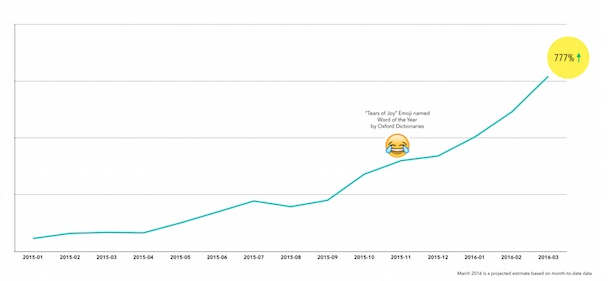
May I remind you that we still have four more months left in 2016. The emojis help add humanization to marketing campaigns. I, and I am sure readers, have seen emojis used in Chevrolet advertisements, Domino’s Pizza’s epic way to order with a pizza emoji on Twitter and even on the latest Ellen Show commercial. There’s even a National Emoji Day on July 17. While companies are utilizing emojis to help humanize their brand, there are differences between the emojis that the public prefers and the emojis that the business world prefers:
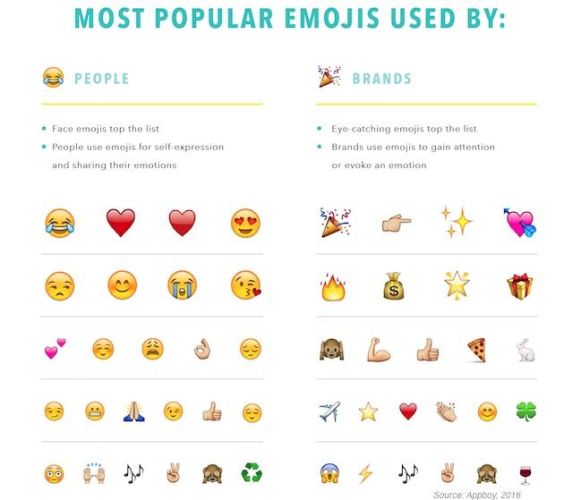
While the world is being taken over by the use of emojis, I cannot help but wonder if there is such a thing as emoji etiquette. When is it wrong to use emojis in marketing? Are we possibly offending Asian-Americans with the new emojis being created? Lastly, are we using emojis the way in which the Japanese founder intended them to be used when he created them in 1999? Let’s find out!
When is it wrong to use emojis in marketing?
The famous saying of less is more is something to keep in mind when marketing with emojis. While some use of emojis do require more, there is a way to do so tastefully without annoying fans of the brand.
Check out these two examples from Social Control:
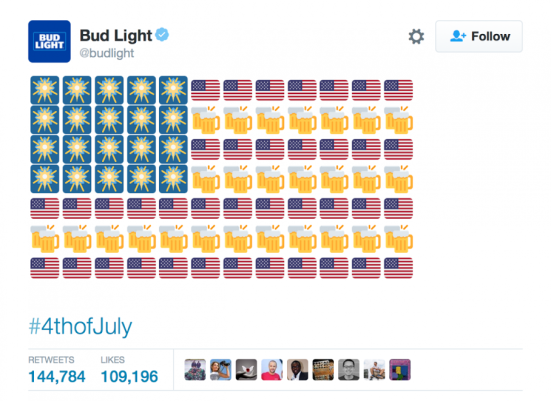
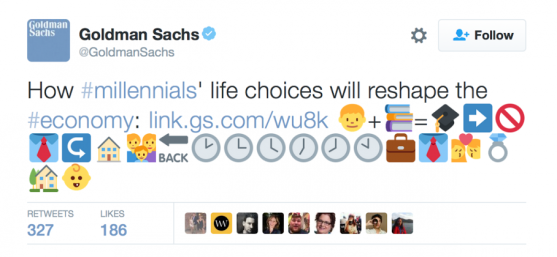
Clearly the Bud light tweet is the more favorable usage of emojis.
Are we possibly offending Asian-Americans with the new emojis being created?
In 2015, Apple released an update that allowed users of the emoji keyboard to customize their human featured emojis by skin tone. The update was Apple simply making an effort to make the keyboard more diverse. The Asian-Americans found the yellow skin tone to be offensive and took their opinions to social media. Just a reminder that we must be mindful of society when choosing emojis to use in campaigns.
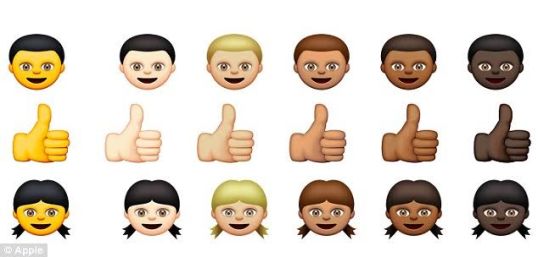
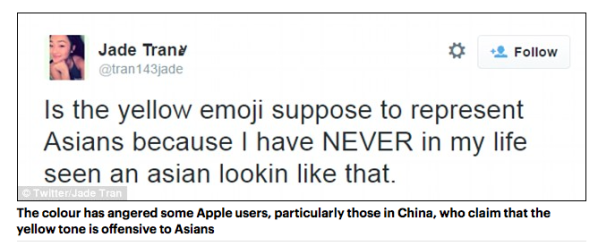
Lastly, are we using emojis the way in which the Japanese founder intended them to be used when he created them in 1999?
The Japanese have typically used emojis to offer a better and more polite method of communication through online/digital media outlets. A lot of emojis represent themes from the Asian cultures that allow for “language play” and “cute culture.” In my opinion, we are using the emojis in a fun and appropriate way when it comes to marketing, however, others may think different.
Which leads to the question–To emoji or not to emoji? Do you think the emoji can survive through emerging media?
-Olivia

Hello Olivia,
Emojis have exploded in popularity over they past several years. Many people use them all of the time and they have become a new issue for businesses to deal with. With increased popularity, it became an issue of whether or not emojis are appropriate for the workplace. According to Business.com (2016), 76% of Americans reported using emojis in the workplace. While many businesses have adopted emojis, some have written guidelines within their employee contracts that limits or prevents their use (Malik, 2016).
When it comes to the longevity of emoji usage in emerging media, I believe it will stay. Even though it may stay, I believe it is more appropriate for platforms that have a text-style setup, like Twitter. The use of emojis on a platform like that seems to be more in its element instead of trying to force emojis into another platform that is not as emoji-friendly. In addition, I believe that future modifications and additions to emojis will be more conscientious of the Japanese culture and possible offenses towards different races or genders.
Thanks,
Kyle Holcomb
Works Cited
Business.com. (2016, January 7). Put An Emoji On It: Should You Use Emojis In Buisness Communication? Retrieved from http://www.business.com/entrepreneurship/put-an-emoji-on-it-should-you-use-emojis-in-business-communication/
Malik, T. (2016, August 10). Do Emojis Belong In The Workplace? Retrieved from https://www.roberthalf.com/creativegroup/blog/do-emojis-belong-in-the-workplace
LikeLike
You definitely touch a sensitive subject with emoji’s and ethnic representations. Some people are definitely not cool with companies trying to represent the color of their skin. When in doubt, I say: stick to what seems correct. Best wishes,
Julieta
LikeLike
Olivia: Have you heard about Emoji targeting on Twitter? Apparently Corona is one brand leveraging this function. When users tweet any summer emoji, they will in turn get GIF animations from @coronaextrausa featuring the user’s emojis and “a branded Corona Extra bottle emoji, ending with the hashtag #RaiseSummer” (Chen, 2016).
This article suggests that the function hasn’t caught on with marketers/consumers yet. What are your thoughts on this?
LikeLike